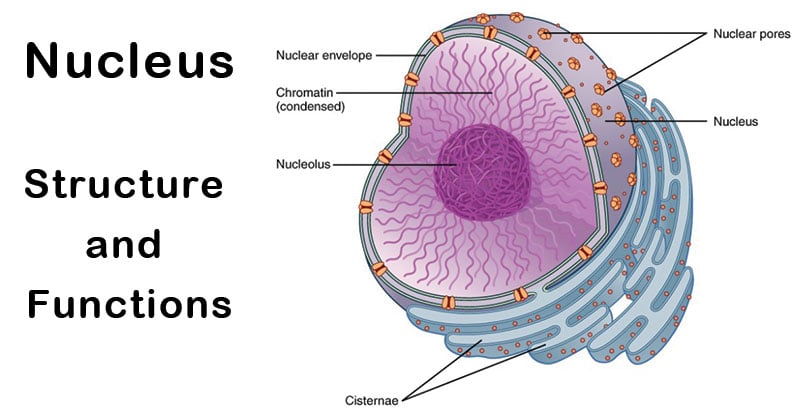What if we could delve deeper into the very essence of life itself, exploring the intricate architecture of the nucleus? This cellular organelle is often regarded as the command center of eukaryotic cells, but its complexity can present a fascinating challenge: understanding its multifaceted structure and functions. The nucleus is not merely a static entity; it is a dynamic location where vital biochemical processes occur, influencing the very fabric of biological activity.
The nucleus is encapsulated by the nuclear envelope, a double membrane that acts as a selective barrier, regulating the passage of ions, molecules, and proteins throughout its porous nuclear pores. This envelope consists of an inner and an outer membrane, contributing to its complex structural integrity. The outer membrane is continuous with the endoplasmic reticulum, revealing how interconnected cell organelles can be.
Within this envelope lies the nucleoplasm, a viscous solution that parallels the cytoplasm and serves as a matrix for the nuclear components. Herein lies a galore of chromatin and nucleolus, both integral to the nucleus’ functions. Chromatin, composed of DNA and proteins, exists in two forms: euchromatin and heterochromatin. Euchromatin represents a less dense form, allowing for active transcription and gene expression, whereas heterochromatin is tightly packed, rendering those genes transcriptionally inactive. This differentiation highlights how structural variations translate to functional diversity.
The nucleolus, often dubbed as the ‘nucleus within the nucleus,’ plays a pivotal role in ribosome biogenesis. It is not membrane-bound, which adds intrigue to its structural definition. The nucleolus is pivotal for synthesizing ribosomal RNA (rRNA) and assembling ribosomal subunits, which are subsequently exported to the cytoplasm for protein synthesis. This activity exemplifies a highly coordinated process that underscores the nucleus’s crucial role in gene expression and regulation.
Centrally located within the nuclear structure is the nuclear matrix, a delicate fibrous network that provides shape and organization, akin to the cytoskeleton of the cytoplasm. This framework is composed of various proteins, serving not only as structural support but also as a participatory lineage in the chromosomal arrangement within the nucleus. The interaction between the nuclear matrix and chromatin is essential for the organization and compaction of DNA, emphasizing that the nucleus serves as a repository of genetic material while maintaining an operational efficiency that echoes through cellular functionality.
Another salient feature of the nucleus is the presence of lamins, intermediate filament proteins that form a dense mesh network beneath the inner membrane. These proteins play a critical role in maintaining nuclear shape, regulating gene expression, and orchestrating chromosomal organization—a testament to how intricate and interdependent structures contribute to overall cellular physiology. In this way, the nucleus transcends being a mere container of DNA; it is an active participant in gene regulation and cellular function.
Moreover, the nucleus serves a crucial role in the cell cycle. During mitosis, for instance, the nuclear envelope disassembles, allowing chromatin to condense into visible chromosomes. This transition is vital for accurate chromosome segregation; any abnormalities in this process can lead to aneuploidy, often associated with malignancies. Consequently, understanding the structural intricacies of the nucleus can unveil profound insights into cellular behavior and oncogenesis.
In exploring the ultra-structural dimensions, advanced microscopy techniques such as electron microscopy allow us to visualize the nucleus at an unprecedented resolution. These insights can reveal nuclear pore complexes (NPCs), elaborate structures embedded within the nuclear envelope that form gateways for nucleocytoplasmic transport. Each NPC consists of multiple proteins called nucleoporins, which together create a selective barrier, controlling the bidirectional flow of molecules. This selective transport mechanism is critical for maintaining homeostasis within the cell and facilitating necessary interactions between nuclear and cytoplasmic components.
The question remains: how do disruptions in nuclear structure impact cellular functions? Research has elucidated that various diseases, encompassing cancer and genetic disorders, can be traced back to anomalies in nuclear architecture. This stretch of inquiry illustrates the nucleus as a potential nexus of pathological phenomena. As such, investigations continue into how the dynamics of nuclear structure correlate with disease pathology, opening avenues for innovative therapeutic strategies.
Bridging the gap between structure and function, the nucleus orchestrates an elegant ballet of interactions: it houses genetic blueprints, governs gene expression, and participates in fundamental processes like replication and repair. But its story does not end here; ongoing studies delve into the epigenetic regulations within the nucleus, revealing how post-translational modifications and environmental stimuli can influence gene expression without altering the DNA sequence itself.
In conclusion, the nucleus is an architectural marvel, teeming with dynamic processes that dictate cellular life. From its double membrane to the intricate nuclear matrix and nucleolus, the structural complexity of the nucleus provides insight into its role as the command center of the cell. The interplay of its components is not merely a structural curiosity but an indication that the nucleus synthesizes genetic information with the life-sustaining tasks of the cell. Understanding the nucleus invites us to ponder the vast depths of molecular biology and cell physiology. How might future discoveries regarding nuclear structure and function reshape our understanding of life at the cellular level? The quest for this knowledge continues to ignite curiosity and challenge the realms of scientific inquiry.












